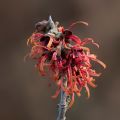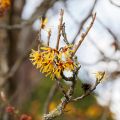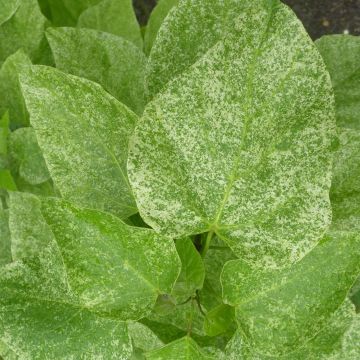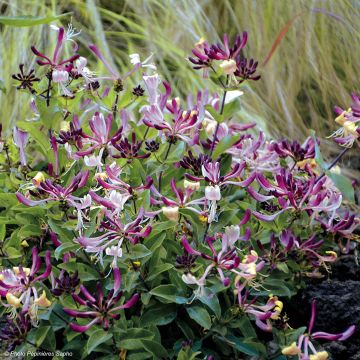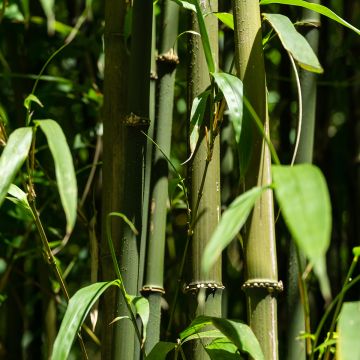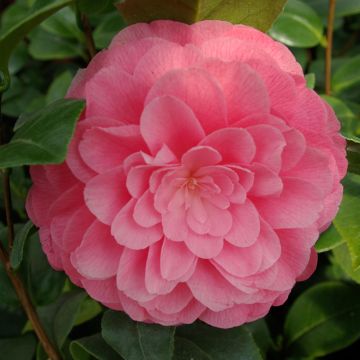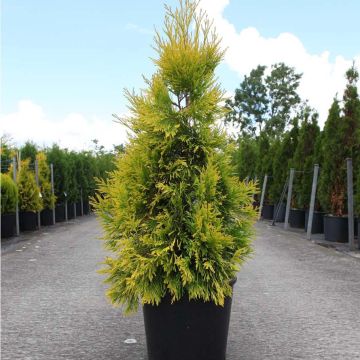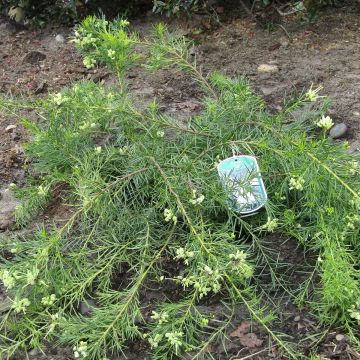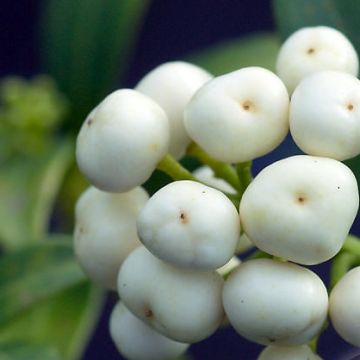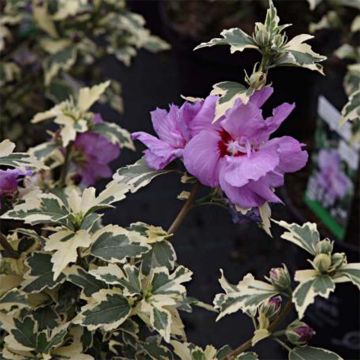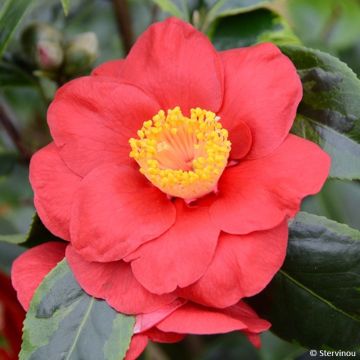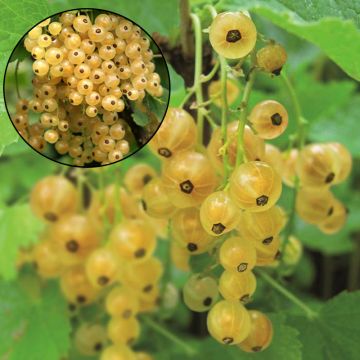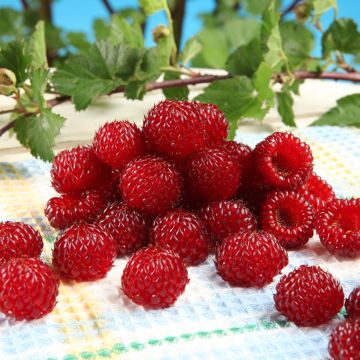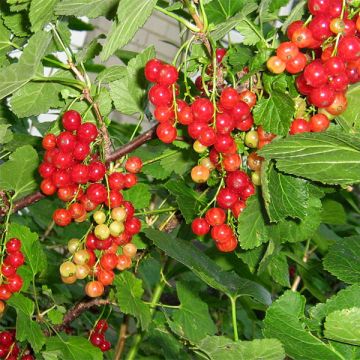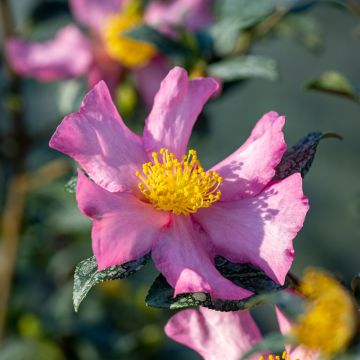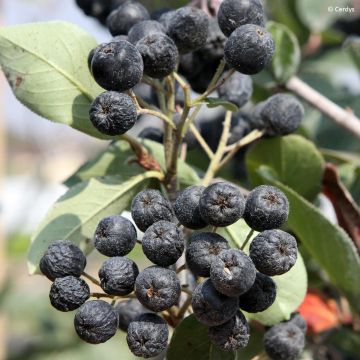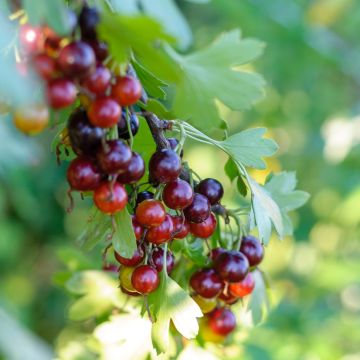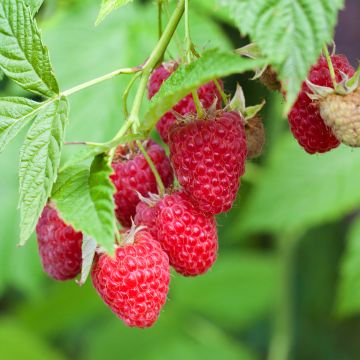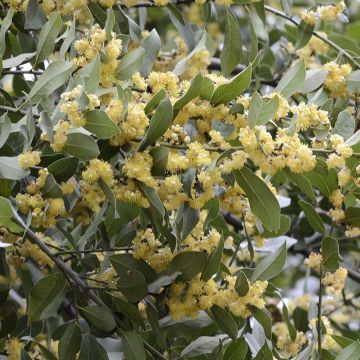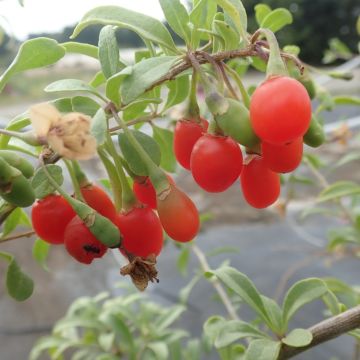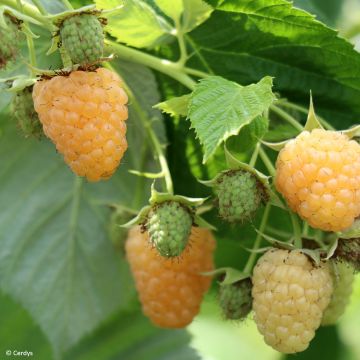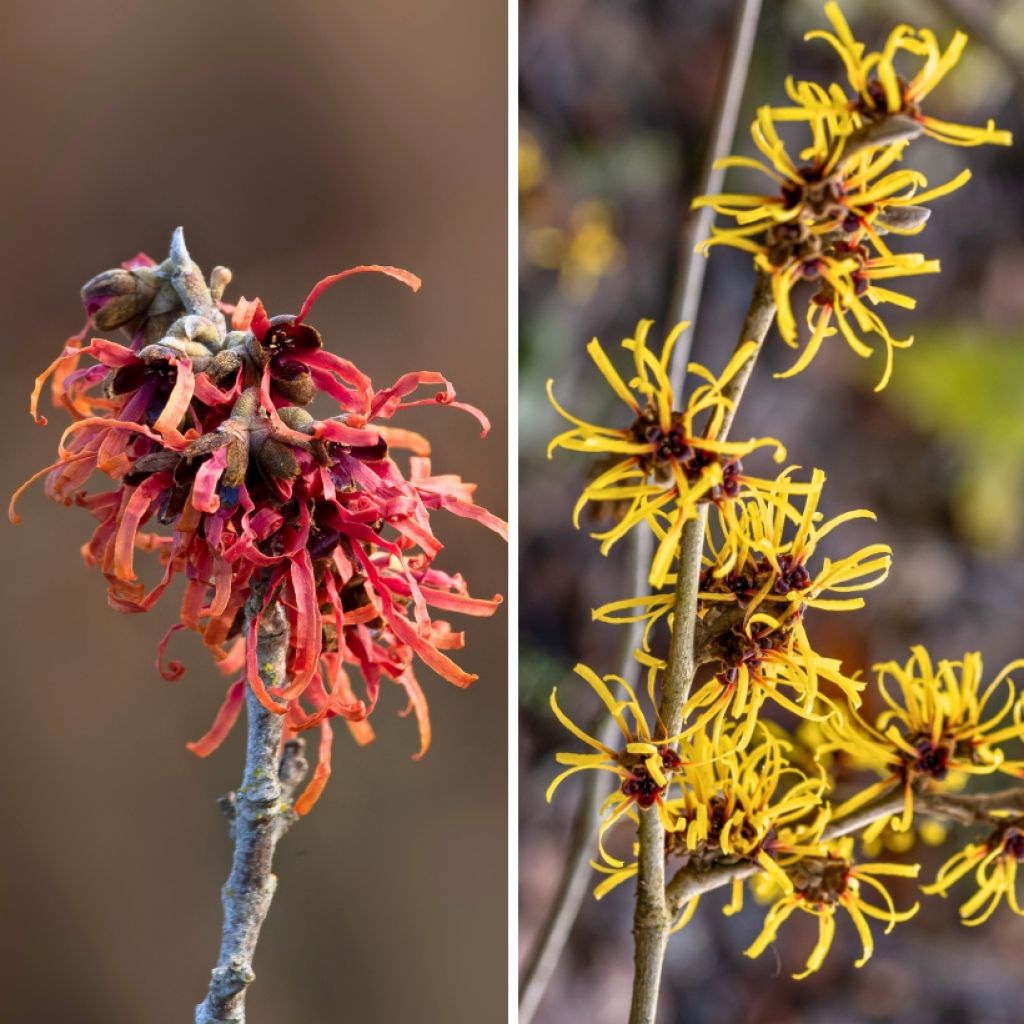

Duo of yellow and red witch hazel
Duo of yellow and red witch hazel
Hamamelis
This plant carries a 24 months recovery warranty
More information
We guarantee the quality of our plants for a full growing cycle, and will replace at our expense any plant that fails to recover under normal climatic and planting conditions.
From €5.90 for pickup delivery and €6.90 for home delivery
Express home delivery from €8.90.
Does this plant fit my garden?
Set up your Plantfit profile →
Collection items (2 plants)
Description
This duo of Witch Hazels will brighten up the garden in winter, and again in autumn. These large, hardy deciduous shrubs are famous for their fragrant and colourful flowering that spreads from December to February. Their ribbon-shaped flowers, which appear before the foliage, enliven the shortest days of the year. And their declining autumn foliage in warm shades sets hedges and large beds ablaze.
The duo consists of:
1 Hamamelis x intermedia 'Diane': a bush that reaches a height of 3 to 4 metres, its burgundy red flowers appear from December to February. Its autumn foliage is a flamboyant orange-red.
1 Hamamelis mollis 'Pallida': also reaching a height of 3 to 4 metres, this variety bears pale yellow, fragrant flowers that mainly bloom in January, but sometimes until March depending on the climate. Its autumn foliage is a brilliant golden yellow.
Plant these witch hazels in early spring or autumn. They thrive in acidic to neutral, humus-rich, well-drained soils, in full sun or partial shade. They can be used in large beds, within an informal hedge, or as isolated specimens. Keep a distance of 2 metres between each plant to allow for proper development. These slow-growing shrubs can reach a spread of 3 to 4 metres.
To fully enjoy the beauty and fragrance of your witch hazels, plant them near the house or a pathway. They will be nicely showcased in front of a hedge of evergreen shrubs. To enhance your witch hazel duo, plant some hellebores in front of them, as these perennials will form a superb flower border in winter. Japanese maples, which offer magnificent foliage from spring to autumn, also make a harmonious combination with witch hazels. Consider also coloured stem dogwoods planted in the background. They will enhance the winter flowering of your witch hazels.
Report an error about the product description
Plant habit
Flowering
Foliage
Botanical data
Hamamelis
Hamamelidaceae
Cultivar or hybrid
Other Shrubs A to Z
Planting and care
Hamamelis do not tolerate limestone so should be grown in soil enriched with leaf compost and ericaceous soil. This shrub does not like heat and drought, but it withstands cold weather very well. The soil it is planted in should remain moist, even in summer. Mulching around the base of the plant will help maintain moisture.
Planting period
Intended location
Care
This item has not been reviewed yet - be the first to leave a review about it.
Hedge shrubs
Haven't found what you were looking for?
Hardiness is the lowest winter temperature a plant can endure without suffering serious damage or even dying. However, hardiness is affected by location (a sheltered area, such as a patio), protection (winter cover) and soil type (hardiness is improved by well-drained soil).

Photo Sharing Terms & Conditions
In order to encourage gardeners to interact and share their experiences, Promesse de fleurs offers various media enabling content to be uploaded onto its Site - in particular via the ‘Photo sharing’ module.
The User agrees to refrain from:
- Posting any content that is illegal, prejudicial, insulting, racist, inciteful to hatred, revisionist, contrary to public decency, that infringes on privacy or on the privacy rights of third parties, in particular the publicity rights of persons and goods, intellectual property rights, or the right to privacy.
- Submitting content on behalf of a third party;
- Impersonate the identity of a third party and/or publish any personal information about a third party;
In general, the User undertakes to refrain from any unethical behaviour.
All Content (in particular text, comments, files, images, photos, videos, creative works, etc.), which may be subject to property or intellectual property rights, image or other private rights, shall remain the property of the User, subject to the limited rights granted by the terms of the licence granted by Promesse de fleurs as stated below. Users are at liberty to publish or not to publish such Content on the Site, notably via the ‘Photo Sharing’ facility, and accept that this Content shall be made public and freely accessible, notably on the Internet.
Users further acknowledge, undertake to have ,and guarantee that they hold all necessary rights and permissions to publish such material on the Site, in particular with regard to the legislation in force pertaining to any privacy, property, intellectual property, image, or contractual rights, or rights of any other nature. By publishing such Content on the Site, Users acknowledge accepting full liability as publishers of the Content within the meaning of the law, and grant Promesse de fleurs, free of charge, an inclusive, worldwide licence for the said Content for the entire duration of its publication, including all reproduction, representation, up/downloading, displaying, performing, transmission, and storage rights.
Users also grant permission for their name to be linked to the Content and accept that this link may not always be made available.
By engaging in posting material, Users consent to their Content becoming automatically accessible on the Internet, in particular on other sites and/or blogs and/or web pages of the Promesse de fleurs site, including in particular social pages and the Promesse de fleurs catalogue.
Users may secure the removal of entrusted content free of charge by issuing a simple request via our contact form.
The flowering period indicated on our website applies to countries and regions located in USDA zone 8 (France, the United Kingdom, Ireland, the Netherlands, etc.)
It will vary according to where you live:
- In zones 9 to 10 (Italy, Spain, Greece, etc.), flowering will occur about 2 to 4 weeks earlier.
- In zones 6 to 7 (Germany, Poland, Slovenia, and lower mountainous regions), flowering will be delayed by 2 to 3 weeks.
- In zone 5 (Central Europe, Scandinavia), blooming will be delayed by 3 to 5 weeks.
In temperate climates, pruning of spring-flowering shrubs (forsythia, spireas, etc.) should be done just after flowering.
Pruning of summer-flowering shrubs (Indian Lilac, Perovskia, etc.) can be done in winter or spring.
In cold regions as well as with frost-sensitive plants, avoid pruning too early when severe frosts may still occur.
The planting period indicated on our website applies to countries and regions located in USDA zone 8 (France, United Kingdom, Ireland, Netherlands).
It will vary according to where you live:
- In Mediterranean zones (Marseille, Madrid, Milan, etc.), autumn and winter are the best planting periods.
- In continental zones (Strasbourg, Munich, Vienna, etc.), delay planting by 2 to 3 weeks in spring and bring it forward by 2 to 4 weeks in autumn.
- In mountainous regions (the Alps, Pyrenees, Carpathians, etc.), it is best to plant in late spring (May-June) or late summer (August-September).
The harvesting period indicated on our website applies to countries and regions in USDA zone 8 (France, England, Ireland, the Netherlands).
In colder areas (Scandinavia, Poland, Austria...) fruit and vegetable harvests are likely to be delayed by 3-4 weeks.
In warmer areas (Italy, Spain, Greece, etc.), harvesting will probably take place earlier, depending on weather conditions.
The sowing periods indicated on our website apply to countries and regions within USDA Zone 8 (France, UK, Ireland, Netherlands).
In colder areas (Scandinavia, Poland, Austria...), delay any outdoor sowing by 3-4 weeks, or sow under glass.
In warmer climes (Italy, Spain, Greece, etc.), bring outdoor sowing forward by a few weeks.

































